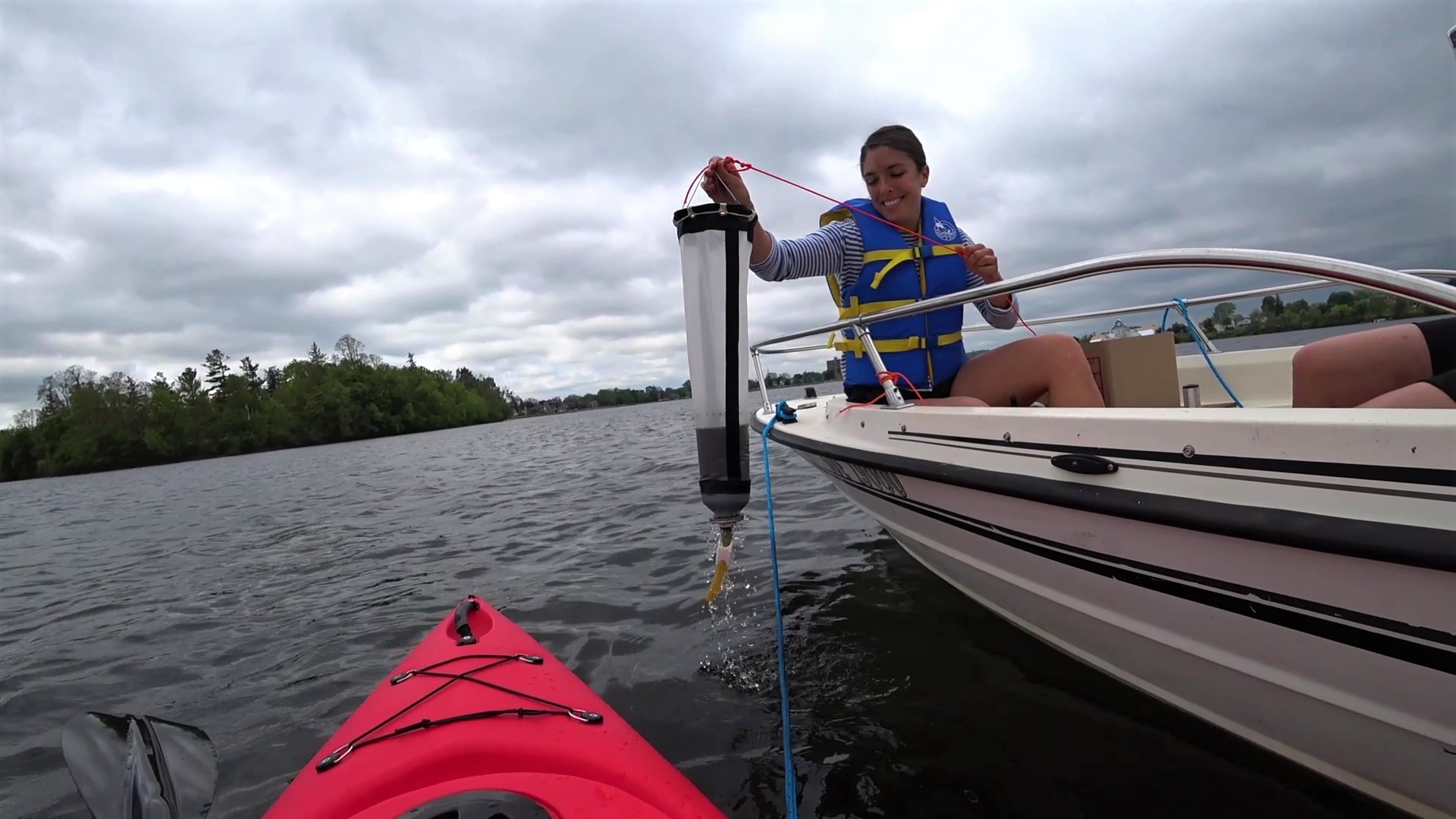
The Invasive Species Centre and the Federation of Ontario Cottagers’ Associations (FOCA) are pleased to launch a community science program IsampleON to monitor and help prevent invasive species in Ontario’s lakes. With the help of local community members, IsampleON will collect and analyze water samples to monitor for invasive mussels and spiny water flea. The program will also work to raise awareness of the impacts aquatic invasive species have on shorelines and inland lakes, along with actions community members can take to reduce their spread. This pilot program is supported by the Great Lakes Local Action Fund and the Ontario Ministry of Environment, Conservation and Parks.
The environmental, social, and economic impacts of invasive mussels are serious. Invasive mussels filter plankton out of the water, depleting food sources for native species, and allowing in more sunlight which promotes toxic algal blooms and excessive growth of aquatic vegetation. Invasive mussels can also clog water intake pipes, grow on infrastructure such as docks, and their sharp shells can be a health and safety hazard. The most critical pathway for the spread of invasive mussels, and other aquatic invaders, is recreational boating.
The Invasive Species Centre and FOCA encourage recreational boaters to help stop the spread of aquatic invasive species by properly cleaning, draining, and drying watercraft and other gear when travelling between lakes.
Action is needed to protect lakes that do not yet have these invasive species but because of their water chemistry and easy access, are at high risk of invasion. Through IsampleON, lake samples will be collected by trained community volunteers from 25 select lakes in the Lake Huron, St. Lawrence, and Lake Ontario watersheds, which will then be analyzed for presence or absence of invasive mussels and spiny water flea.
“IsampleON addresses an environmental need by monitoring the potential spread of invasive mussels and other aquatic invasive species in inland lakes in Ontario. It also supports community action around pathways of introduction, such as recreational boating”, states Rebecca Schroeder, Aquatic Invasive Species Liaison at the Invasive Species Centre. “Public awareness and early detection are key to preventing new invasive species establishments.”
According to Terry Rees of FOCA, “by utilizing local lake association volunteers and committed lake stewards, we can build a network of champions for the protection of our lakes from invasive aquatic species.”
The project also supports the Ministry of Natural Resources and Forestry (MNRF) Boaters Action Plan and the recent MNRF recreational boating proposal to encourage boaters to clean, drain, and dry their boats to prevent the spread of invasive mussels and other aquatic invasive species. All Ontarians have a role to play in preventing the spread of invasive species. When you are out on the water, please clean, drain, and dry your boat to help protect our lakes.
For more information on IsampleON, and to learn what you can do to help protect Ontario’s waters, visit the program web pages at http://foca.on.ca/IsampleON/ and http://www.invasivespeciescentre.ca/isampleon.
